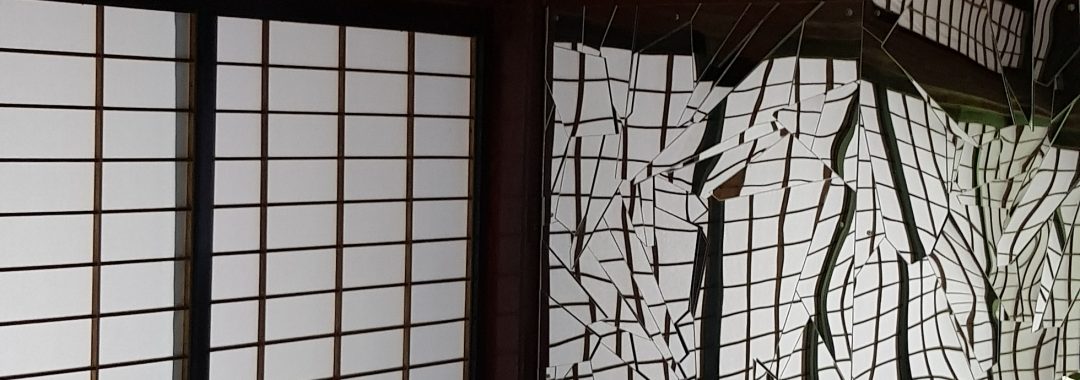In the book What Art Is (2013) influential philosopher of art, Arthur Danto, writes about the distinction between art and other things in the world in an attempt to answer the question, what makes art art? To Danto the answer is an essentialist universalism: art objects are designed for viewers to grasp their intended meaning (A. C. Danto 2013, 38). In his earlier text The Artworld (1964), Danto similarly suggested that what distinguishes an artwork from other objects – like, for example, a bed by artist Robert Rauschenberg and your bed at home – is how they are evaluated by the artworld. In other words, what makes Rauschenberg’s bed an artwork and the one in your bedroom a bed is how the art object sits within and refers to the artworld and its institutions.
Danto’s definition is widely accepted and used, but by no means does it stand alone. Neither within ‘artworld’ discussions or beyond. In 1967 cultural theorist and philosopher Tsurumi Shunsuke published the book Genkai Geijutsuron (Theories of Marginal Art) (鶴見 (Tsurumi) 1967). Writing from Japan and East Asia, Tsurumi offers an analysis of art which argues that there are several spheres – or worlds – of art, only one of which is dictated by the ‘artworld’ Danto writes about. Tsurumi identifies three modes of art-making: pure art, popular art, and marginal art. Pure art is Danto’s artworld and what most people know simply as ‘art’, defined and sanctioned by ‘Western’ artworld institutions, like art history, galleries, museums, etc. Popular artworks are products for the masses, like design. Marginal art is the artful practices of the everyday. Family photo albums; gardening; woodworking; and much else. Marginal art is the most important and widely circulating artform, but was relegated to the sidelines (the margins), with the entrance of pure art, and the enforced hierarchy (art/artefact see e.g. Gell 1996) imposed by Western art history alongside other imperial and colonially imposed hierarchies. Today, battles for marginal artistic belonging are being fought across the world. Not to be ‘elevated’ to pure art, but to be appraised on its own premisses (e.g. Errington 1998; Hallam 2008).
This extremely brief and limited recount of just two theories of what art is, is not just an aid to the non-initiated reader. It is also to remind the initiated reader that both ‘an artworld’ and multiple artworlds exist. The notion of art is never just up for grabs, nor a frictionless synonym for creativity. ‘Art’ always drags along worlds with stakes, contentions, hard work, passions, and long, tiresome and profoundly rich cultures of artmaking. Importantly, in an academic setting, art is always also a colonial and imperial category, which has actively been used to erase some artworlds and promote others. Much like ‘Science’, ‘Art’ is never innocent or unmarked. Yet, according to Tsurumi, if the word ‘art’ is used without careful attention to the art worlds evoked, it almost always refers to pure art, or the ‘one-world artworld’[1] defined by scholars like Danto.
[1] This is an implicit reference to John Laws “What’s Wrong with a One-World World?” (Law 2015).Fig. 1.: Lee Bul, Doctor’s House, Echigo Tsumari Art Field, 2018.
Author: Line Thorsen
Reference:
Danto, Arthur. 1964. “The Artworld”. The Journal of Philosophy, American Philosophical Assiciation Eastern Division Sixty-First Annual Meeting 61 (19): 571–84.
Danto, Arthur C. 2013. What Art Is. http://site.ebrary.com/id/10659304.
Errington, Shelly. 1998. The death of authentic primitive art and other tales of progress. Berkeley: University of California Press.
Gell, Alfred. 1996. “Vogel’s Net – Traps as Artworks and Artworks as Traps”. Journal of Material Culture Vol. 1 (1): 15–38.
Hallam, Huw. 2008. “Globalised Art History: The New Universality and the Question of Cosmopolitanism”. Australian and New Zealand Journal of Art 9 (1–2): 74–89. https://doi.org/10.1080/14434318.2008.11432795.
Law, John. 2015. “What’s Wrong with a One-World World?” Distinktion: Journal of Social Theory 16 (1): 126–39. https://doi.org/10.1080/1600910X.2015.1020066.
鶴見 (Tsurumi), 俊輔 (Shunsuke). 1967. 限界芸術論 (Genkai Geijutsuron). 東京: 筑摩書房.
